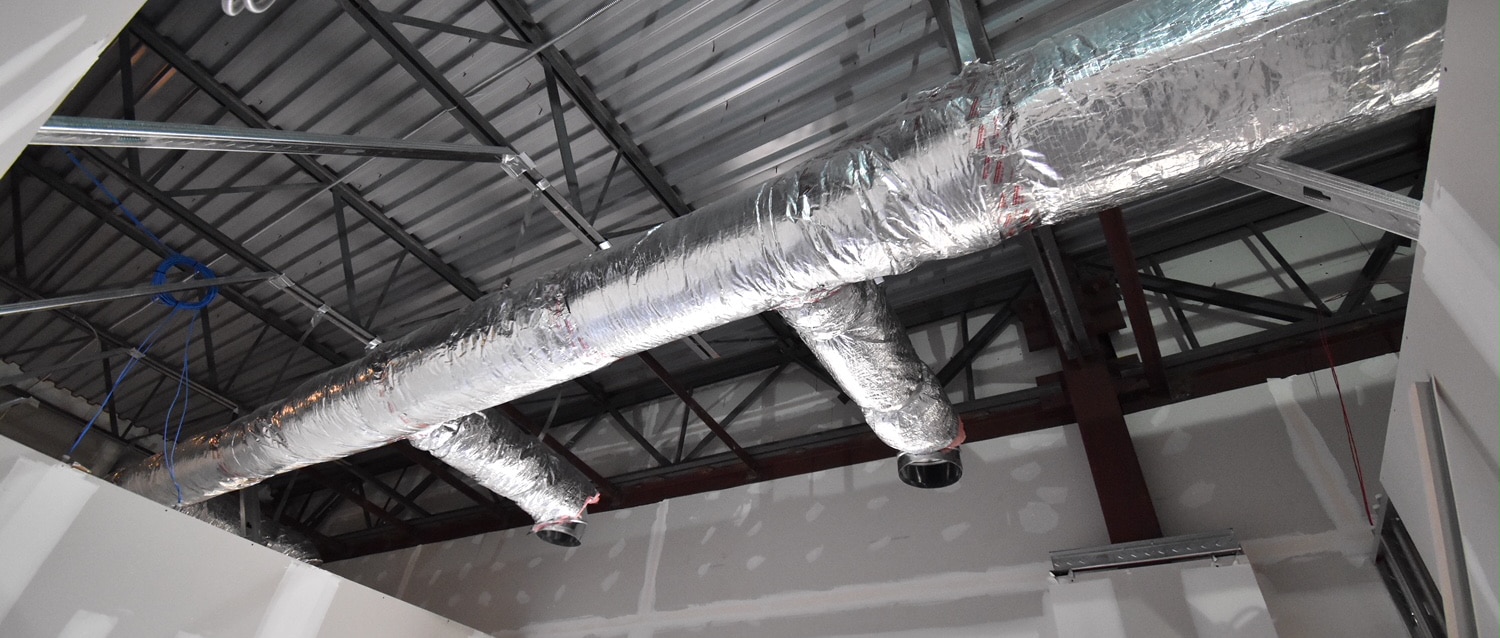
The Forgotten V in HVAC: Ventilation
If you asked most people what an HVAC system does, they’d probably say that it heats and cools your home. And that is generally true—the H stands for heating and the AC stands for air conditioning, after all. But what about that V in the middle? That’s the part people tend to overlook—the V that stands for Ventilation.
See Also: What is the Difference Between HVAC and AC?
When it comes to residential HVAC, the term ventilation refers to the process of exchanging the air inside your home with air from outside. In other words, letting the stale air out and bringing the fresh, outdoor air in. Once upon a time, this was mostly accomplished by opening windows and doors, along with the constant natural leakage of air through cracks, joints, and other openings in the home.
But that’s no longer the case. Now that we have mechanical air conditioning and heating systems to keep us cool in summer and warm in the winter, we don’t want to open up the windows or allow drafts into our homes. First because it decreases our comfort, but also because it wastes energy. When you’re spending money to run your air conditioner, you don’t want to let all that nice, cool air escape from your home. Or as Dad would say when you left the door open, “I’m not paying to air condition the whole neighborhood!”
In fact, the super energy efficient homes being built today are sealed so tightly that they hardly let any air in or out at all, without some help. The result is that indoor air pollutants build up over time. Common indoor pollutants include volatile organic compounds, radon gas, and formaldehyde. According to the US Department of Energy, the level of pollution indoors can be two to five times as much as the level of pollution outdoors. And considering that the average American now spends 90% of their time indoors, that adds up to a lot of exposure!
See Also: What is an Energy Star Rating?
So how can we ventilate our homes to improve indoor air quality without wasting energy or sacrificing comfort? There are a few options to consider, each with its own pros and cons. And which one is right for your home will also depend on the climate you live in.
If you live in an area that has a lot of mild weather, you may be able to go with the cheapest, most old-fashioned option: opening windows. As long as the temperature and humidity outside are at the same level you’d like to have inside and it’s safe to open your windows, you can turn off the heat or air conditioning and let the air flow in naturally. If you live someplace where it’s hot during the day but significantly cooler at night, you can also use this strategy, just by only opening the windows during the night and shutting them at or before dawn.
Unfortunately, most of us don’t live in such pleasant climates—especially not if you live in the Tennessee Valley! If natural ventilation isn’t an option on a regular basis, then it’s time to consider mechanical ventilation measures.
The most commonly used type of mechanical ventilation is spot-ventilation with exhaust fans. Exhaust fans are generally placed in high-humidity, high-odor areas like kitchens and bathrooms. Some run constantly while others run only when switched on by the homeowner. The purpose of these fans is to draw air and humidity out of the home. This decreases the air pressure inside of the home, which causes outside air to be “sucked in” through small openings, for instance through the floorboards or through spaces under exterior doors.
While these exhaust fans are relatively inexpensive and can be helpful in controlling humidity, they do have some drawbacks.
- Most of the air being drawn in comes up from the crawlspace, it can increase the amount of radon gas in the home.
- If the outdoor humidity is very high, using an exhaust fan can actually increase humidity in the home instead of decreasing it.
- Because the air coming into the home is not controlled, exhaust-only systems don’t always significantly improve air quality and may waste energy.
See Also: Humidity Control
Another option to consider is whole-house ventilation using a heat-recovery or energy-recovery ventilator. High-tech HVAC companies like Daikin have developed these ventilation systems to bring fresh air into your home without wasting the energy that you’ve used to heat or cool the air already. Which one is best for your home primarily depends on your climate.
Heat-recovery ventilators transfer heat as they bring air in and out of your home. So in the winter, the heat from the indoor air gets transferred to the fresh outdoor air as it’s drawn into your home. And in the summer, the heat from the outdoor air gets transferred to the indoor air that’s being exhausted out of your home. That means you won’t have wasted the energy used to heat or cool that indoor air.
However, heat-recovery ventilators don’t control humidity, which means that, for instance, in the summer, the air brought into your home might be much more humid than the already-air-conditioned air being exhausted. So heat-recovery ventilators are generally a better choice for drier, less humid climates.
In more humid climates like we have here in the Tennessee Valley, a better option is an energy-recovery ventilator. Energy-recovery ventilators transfer both heat AND humidity as they ventilate your home. That helps to maintain the humidity balance inside of your home year-round. According to the US Department of Energy, energy-recovery ventilators recover about 70-80% of the energy used to heat or cool the inside air. ERVs can be more complicated and expensive to install, but they generally do the best job of maintaining your comfort and indoor air quality without sacrificing efficiency.


